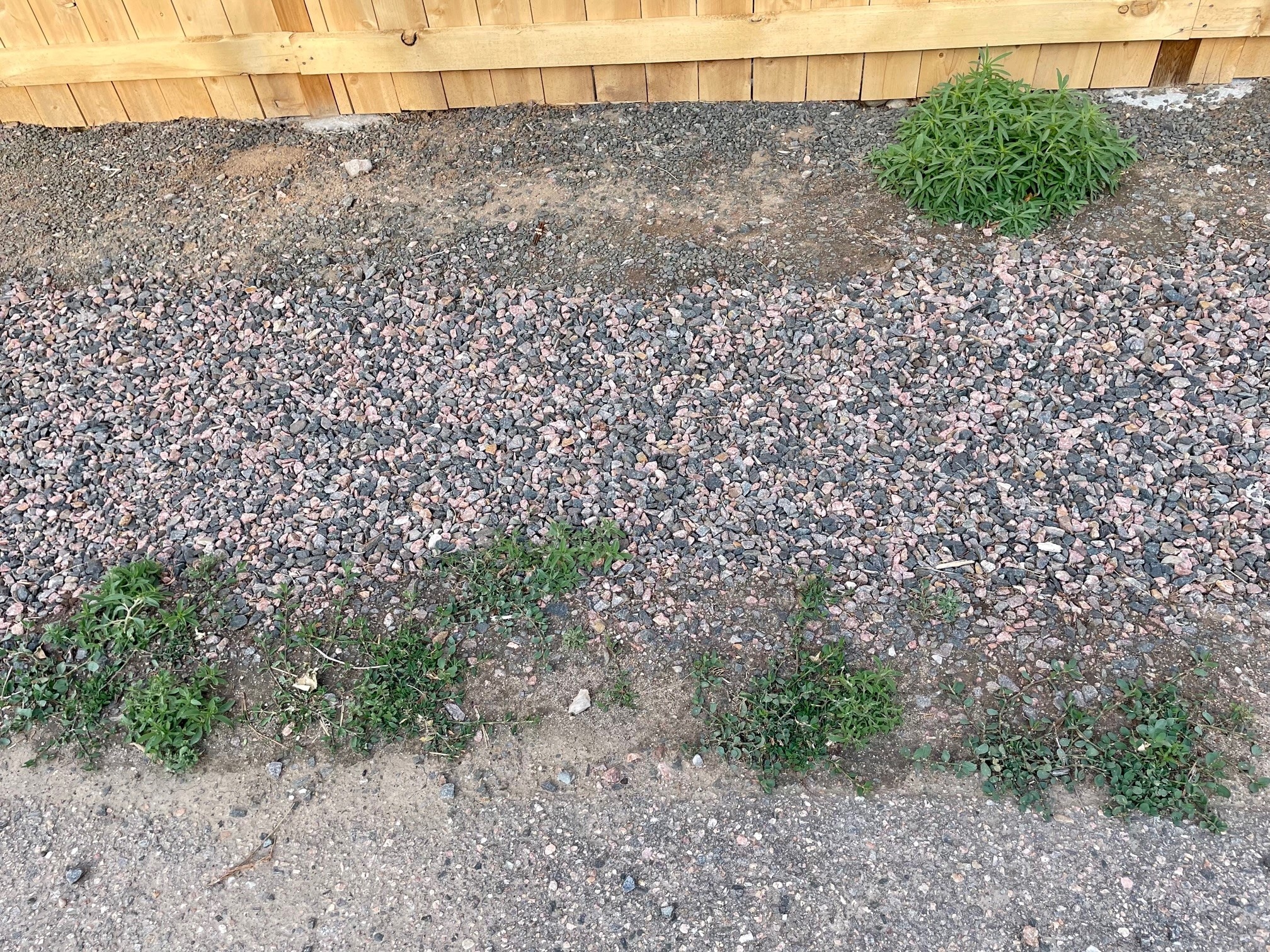Weed/wed/ noun
- a wild plant growing where it is not wanted and in competition with cultivated plants. A plant out of place.
The hard work of plant selection and planting for the season is finished. The lawn is growing. Perennial flower beds are filling in. Vegetable gardens are just beginning to grow. And what happens? The weeds set in. Now is the perfect time to nip it in the bud, figuratively and literally. Work extra hard now to control weeds and life will be a little easier down the road.
Weed Control in Driveway and Sidewalk cracks
 Clean up concrete surfaces by digging out weeds with a sharp tool such as a dandelion digger, flat trowel or Hori-Hori knife. A quick and easy control method is to spray these weeds with a non-selective weed control herbicide such as:
Clean up concrete surfaces by digging out weeds with a sharp tool such as a dandelion digger, flat trowel or Hori-Hori knife. A quick and easy control method is to spray these weeds with a non-selective weed control herbicide such as:
- Hi-Yield Killz-All Quick – trigger spray bottle
- Bonide KleenUp Weed & Grass Killer – trigger spray bottle
- Spectracide Weed & Grass Foaming Edger – aerosol can
Non-selective means it will kill or injure any type of plant it meets including grasses and broadleaf plants. KillzAll or KleenUp may be applied as a ready to use spray already mixed in a spritzer bottle. Or for larger applications, it may be applied as a ready to spray form when the concentrate is mixed with water in a portable pump-up sprayer. Label this sprayer to be used only for herbicides as the residue could carry over to other types of applications.
Caution – this means not only weeds, but desirable plants such as your lawn, annuals and perennial flowers, shrubs and trees will be killed or injured if exposed to KillzAll/KleenUp. The name says it all, so please be aware when applying this product.
Weed Control in the Lawn
 Control of dandelion, clover, bindweed and other perennial broadleaf weeds in the lawn can be done right now. Begin with your proverbial dandelion digger and pry them out of the lawn manually. Excellent control method in low infestation areas.
Control of dandelion, clover, bindweed and other perennial broadleaf weeds in the lawn can be done right now. Begin with your proverbial dandelion digger and pry them out of the lawn manually. Excellent control method in low infestation areas.
Too many to dig or other broadleaf weeds to control? Consider spraying a broadleaf weed control product like:
- Fertilome Weed-Out – hose-end applicator
- Bonide DuraTurf Total Lawn Weed Control – hose-end applicator
- Captain Jacks Lawn Weed Brew – organic trigger spray or hose end applicator
This product is a selective herbicide which will kill only broadleaf plants and not harm grasses. Weed Out may be applied as a ready to use spray already mixed in a spritzer bottle. Or for larger applications, Weed Out/ DuraTurf/ Captain Jacks may be applied as a ready to spray form as an attachment to the end of a garden hose. As water moves through the end of the hose it will syphon the correct amount of Weed Out from the spray bottle as applied to the lawn.
Caution – broadleaf herbicides with kill or injure any broadleaf plant that it meets including desirable annuals, perennials and shrubs. Take care so that the drift or overspray does not spread onto other plants in the landscape.
Broadleaf weeds are most effectively controlled when daytime temperatures are in the 50s to mid-70s and soil moisture is high enough that weeds are not drought-stressed. For heavy weed infestations in the lawn, make 2 applications seven days apart.
Weed Control in the Flower and Vegetable Garden
No silver bullet solutions here. Manually removal of weeds by pulling or digging will work best. Find a tool that works well for you. Consider using the digger or trowel to loosen up the roots so that the weed may be pulled from the ground more easily. For larger weeds, consider using a spade or shovel to do the same thing. Divide the garden into segments and tackle just one segment at a time so as not to be overwhelmed by the task. Do one segment each day until completed.
The most important consideration is to begin early in the season before the weeds get large. Small weeds are easy to remove if you work on one segment at a time. Large weeds will take longer to remove making the task tougher. Start early and keep it up through the season.
Consider using a mulch to help keep the weeds down and hold moisture in the soil. Bark mulch is easy to use, apply and maintain. And it looks pleasing as well. Rock mulch looks nice but requires more work to apply and maintain. Weed barrier fabrics may be used at planting time for areas that will not be disturbed again for some time as it is sometimes difficult to cut through the fabric for future plantings. A light layer of grass clipping will make for a good mulch in the vegetable garden. Each week, spread another thin layer over the soil between plants.
A couple of spray options:
Over the Top/Grass-B-Gone – Selective herbicide to kill grass growing through herbaceous perennials. Mix concentrate in pump-up sprayer. Apply early while grass is growing. Takes 3 weeks for grass to fade away.
Brush & Stump Killer – non-selective for woody weeds i.e. shrubs and trees. Mix concentrate in pump-up sprayer, apply as directed.

